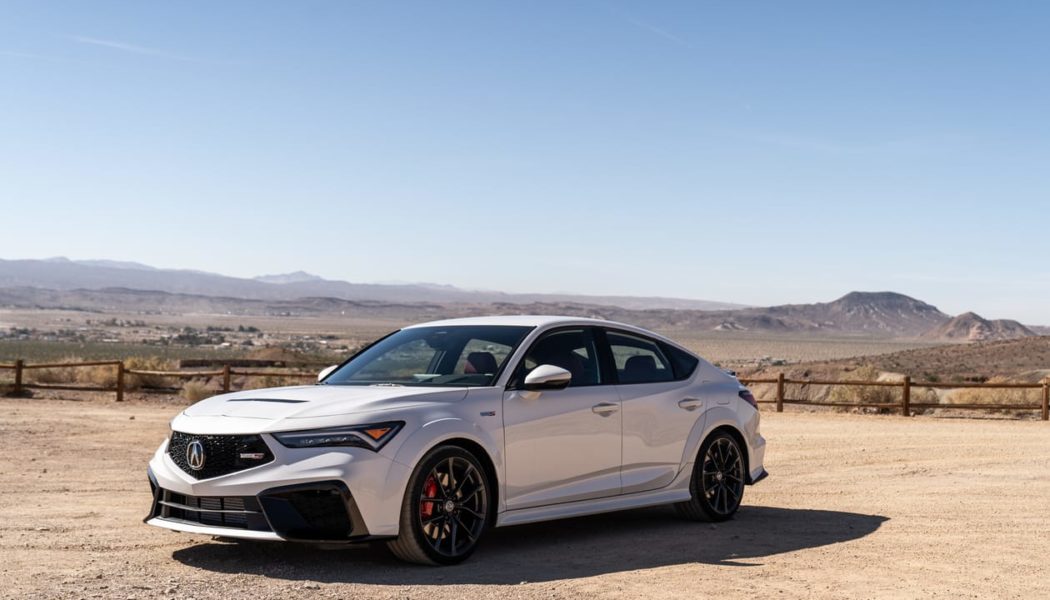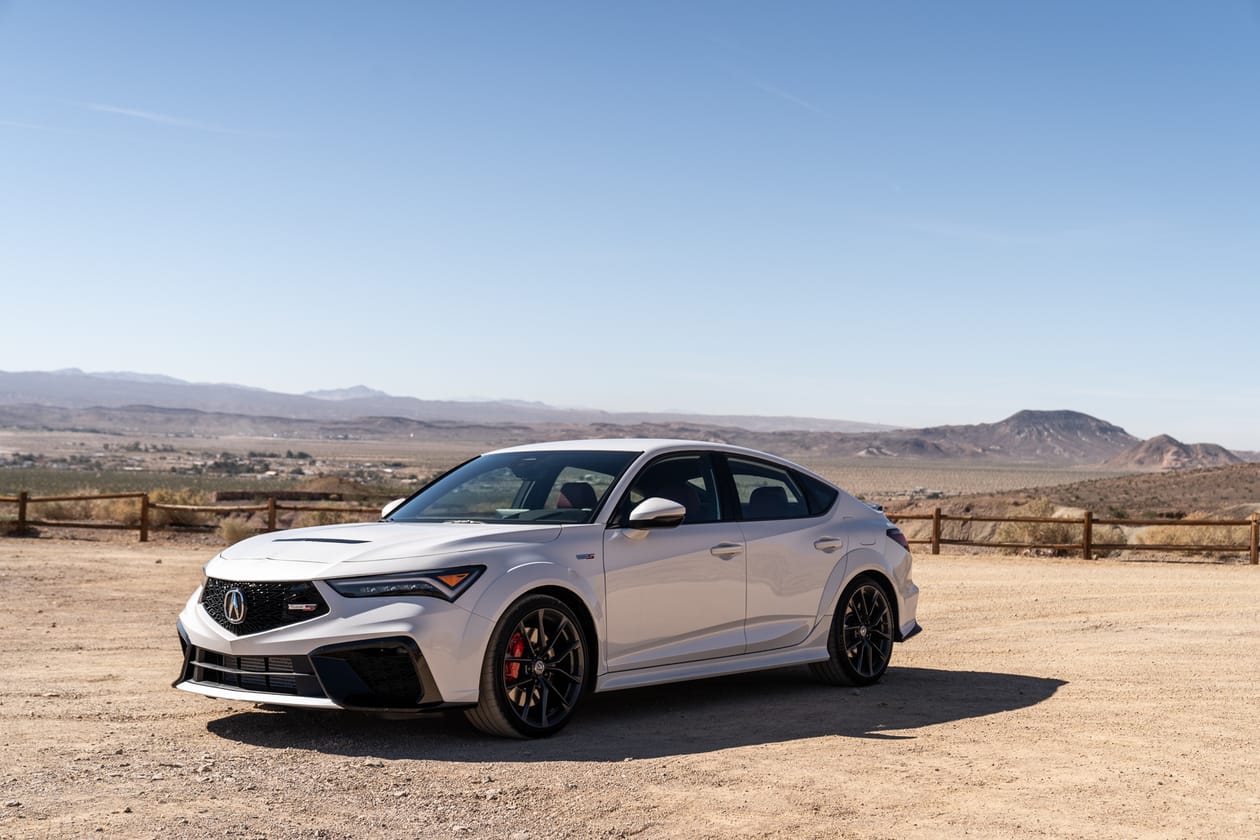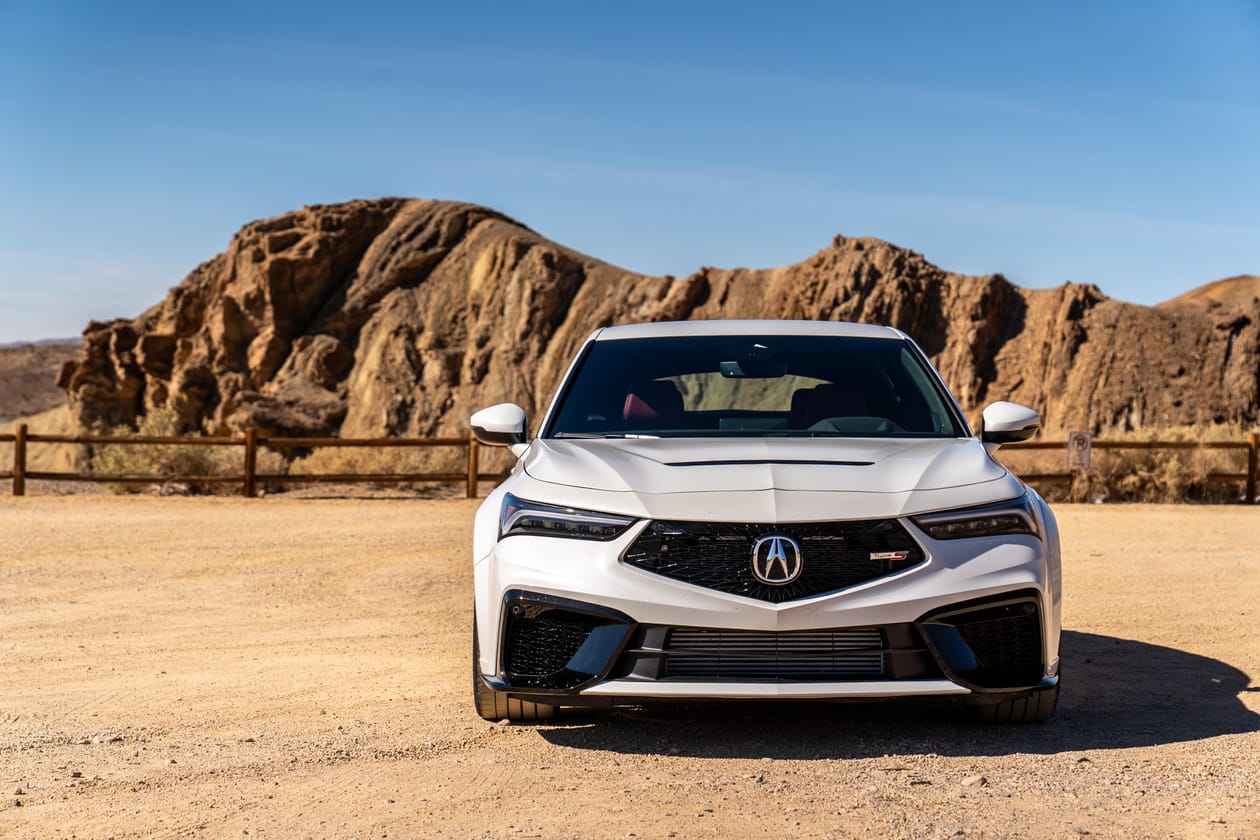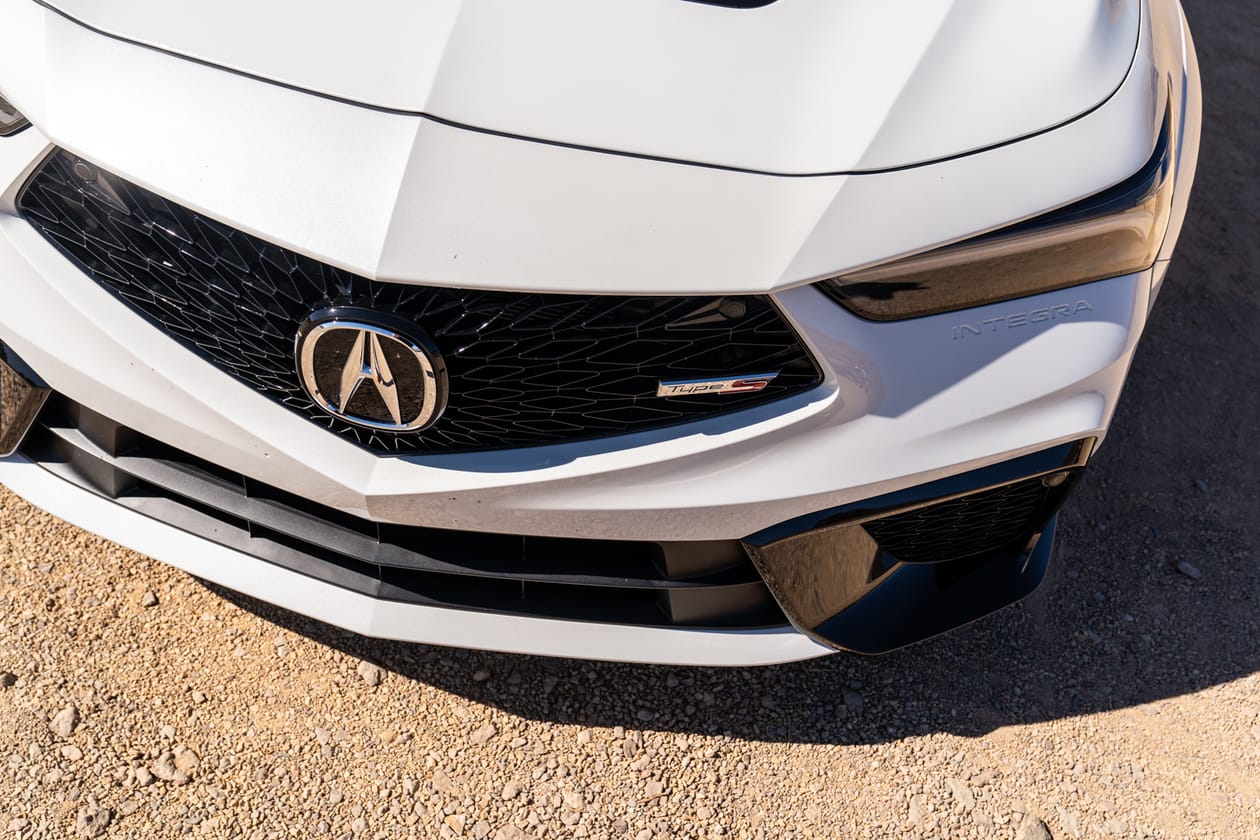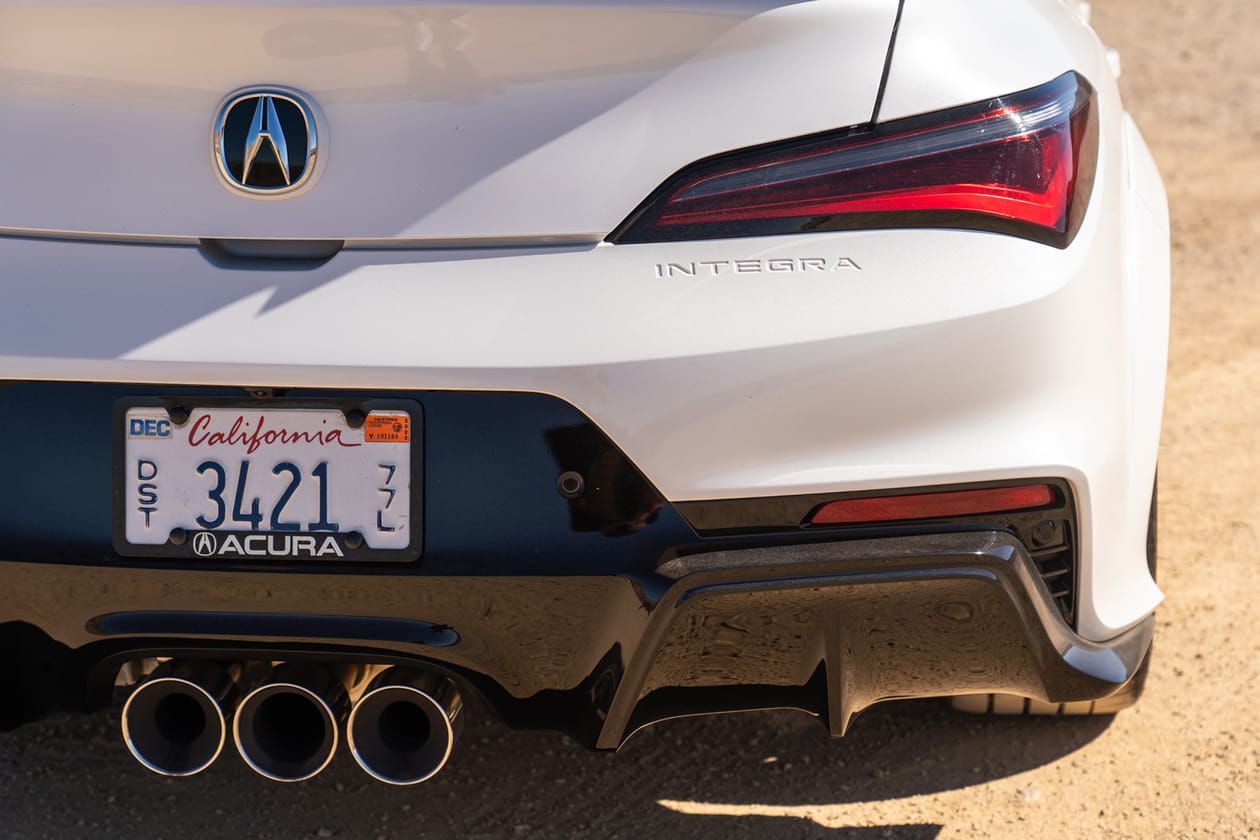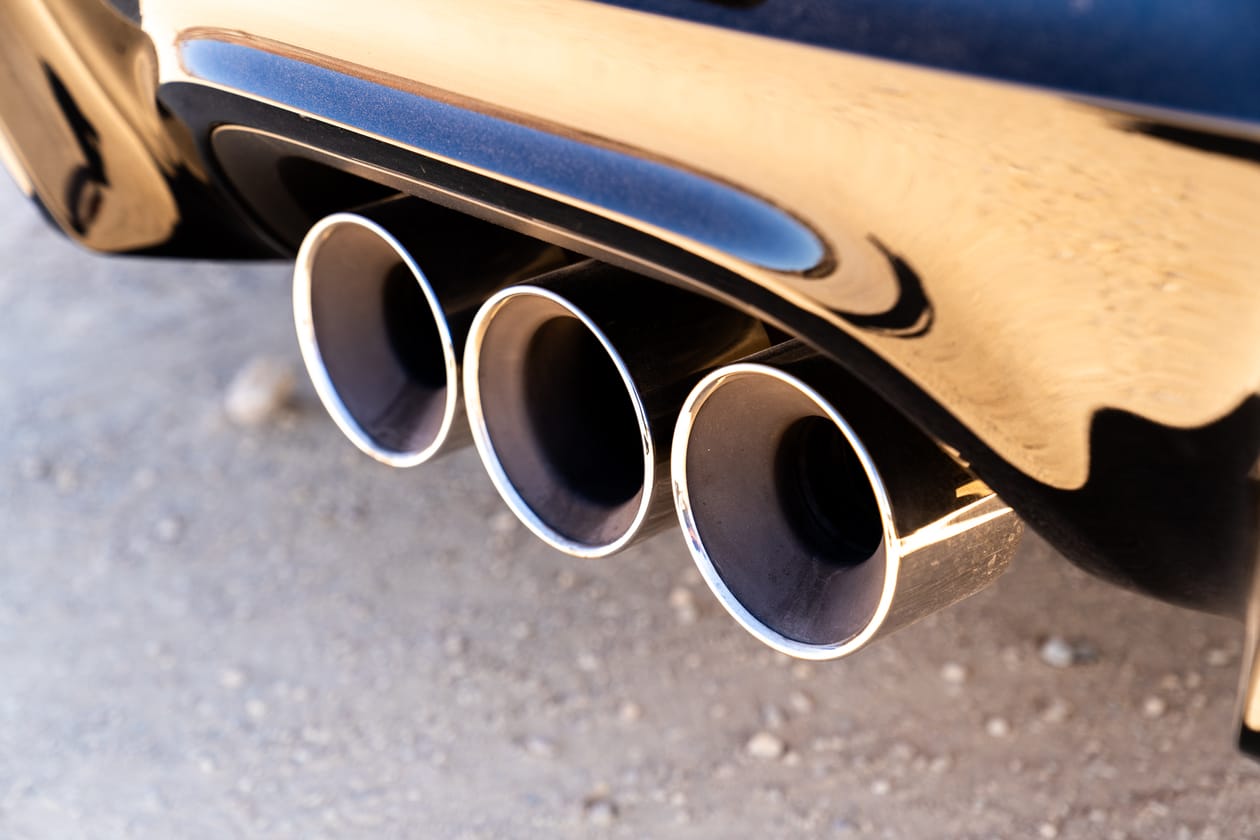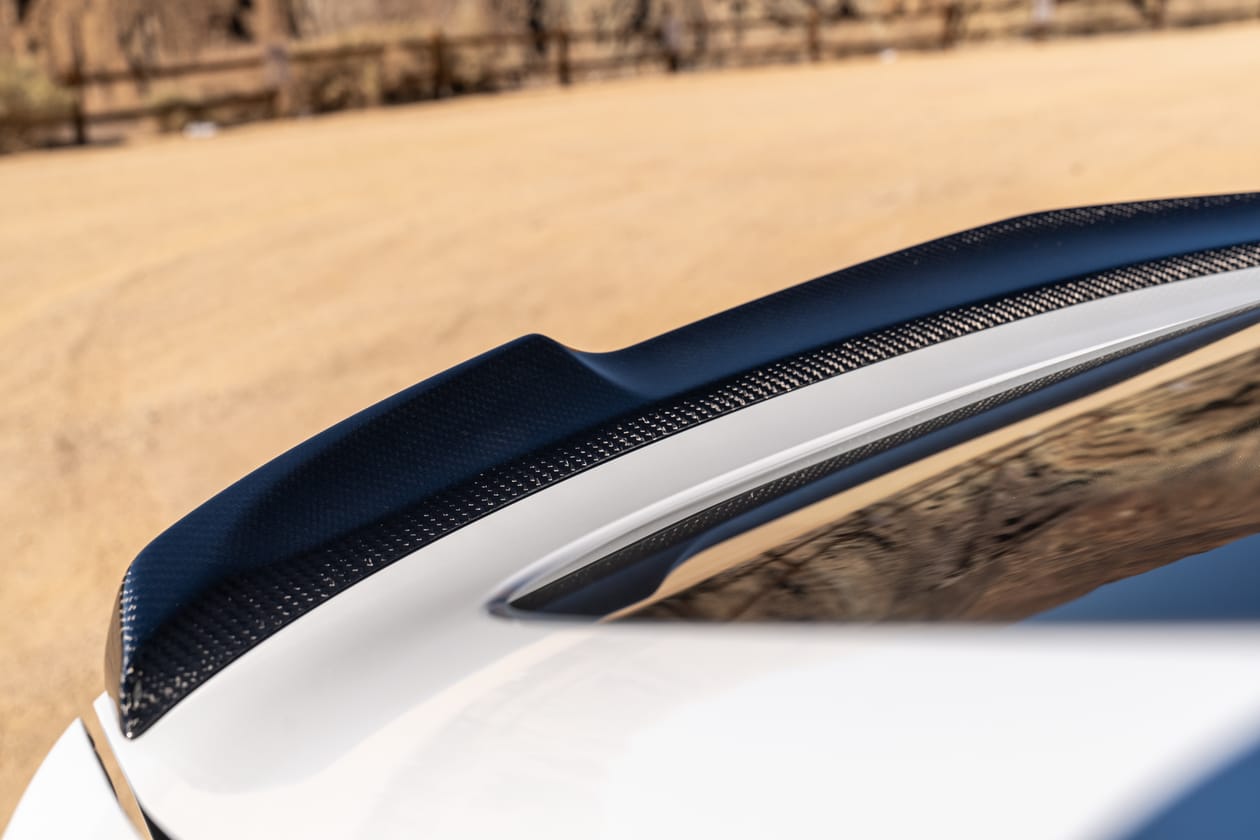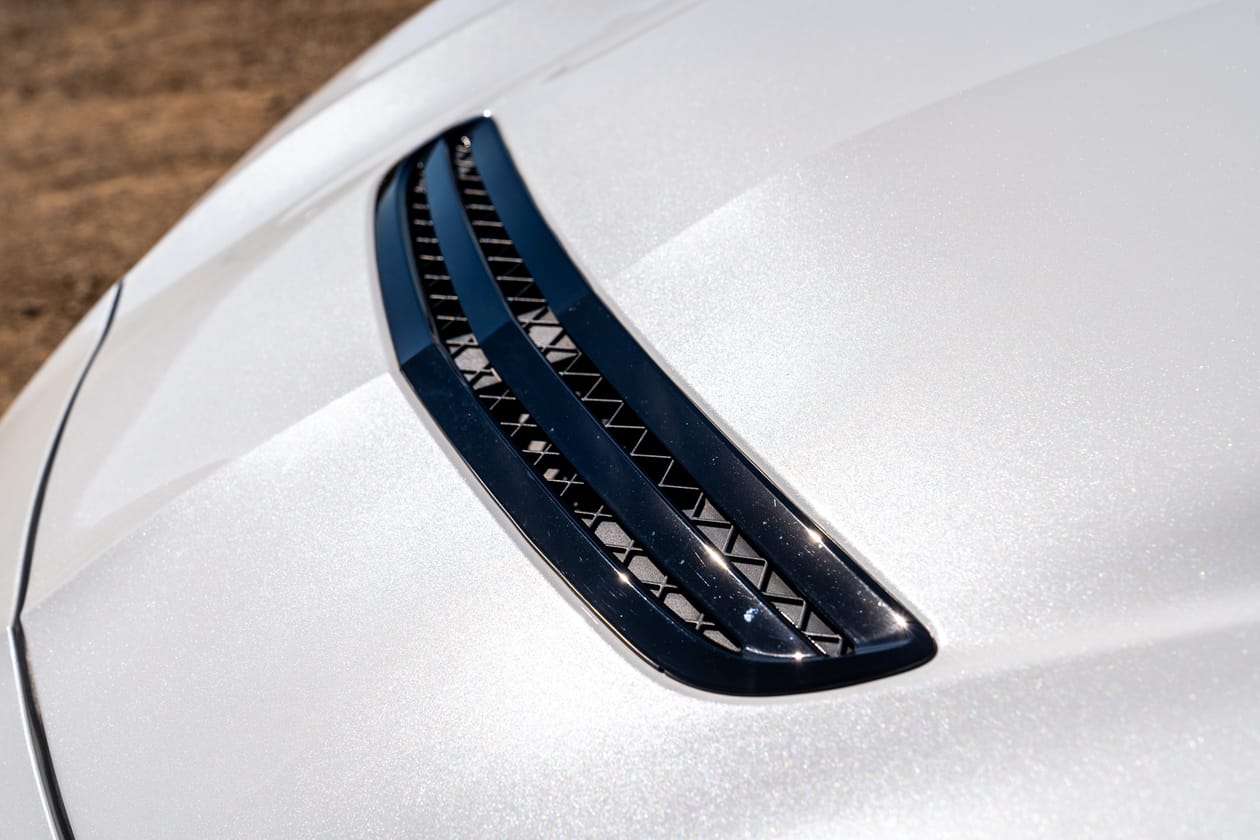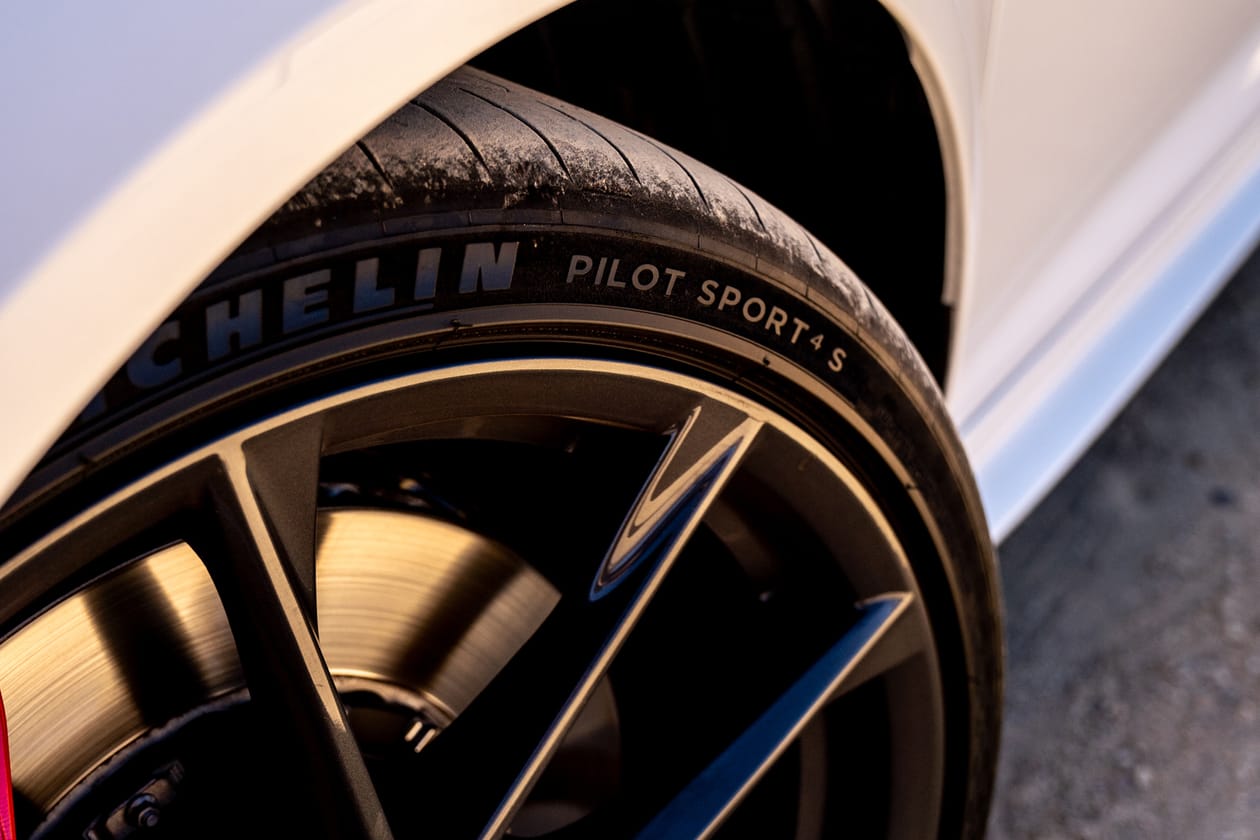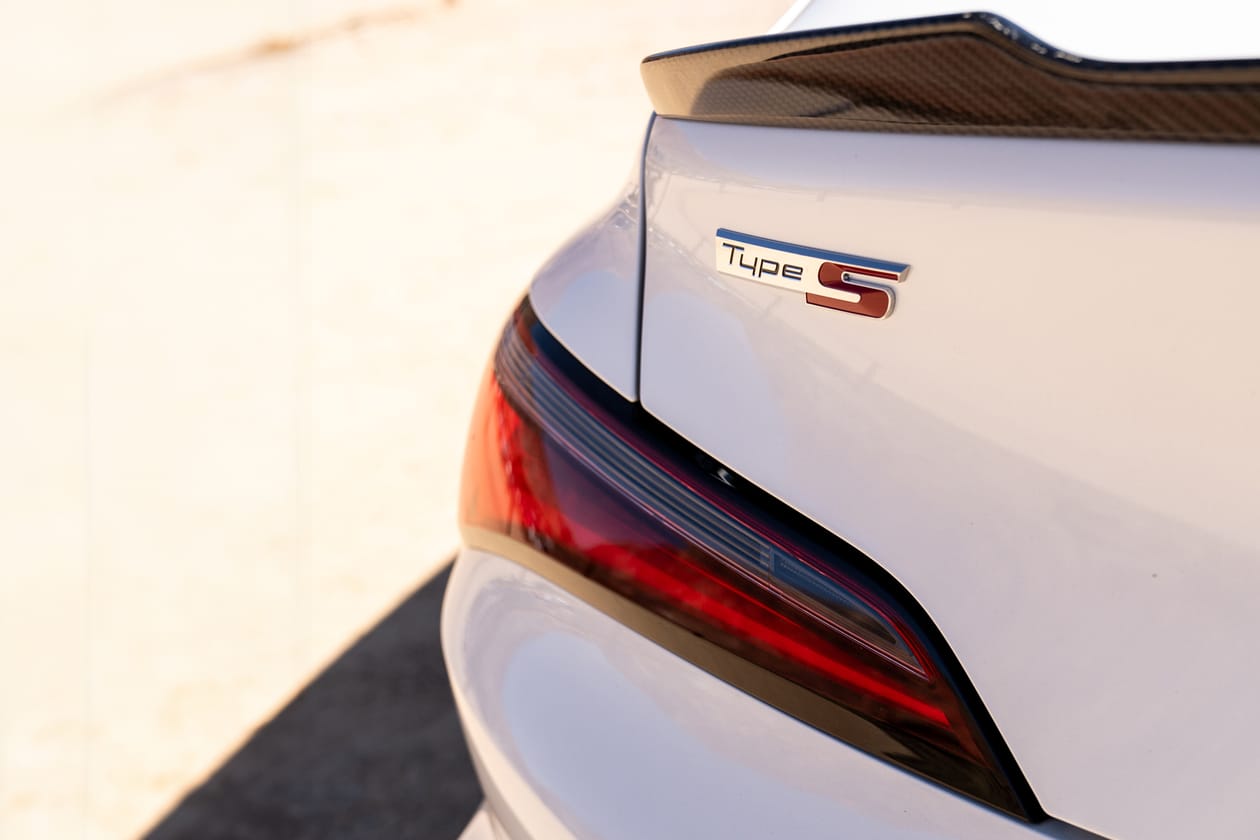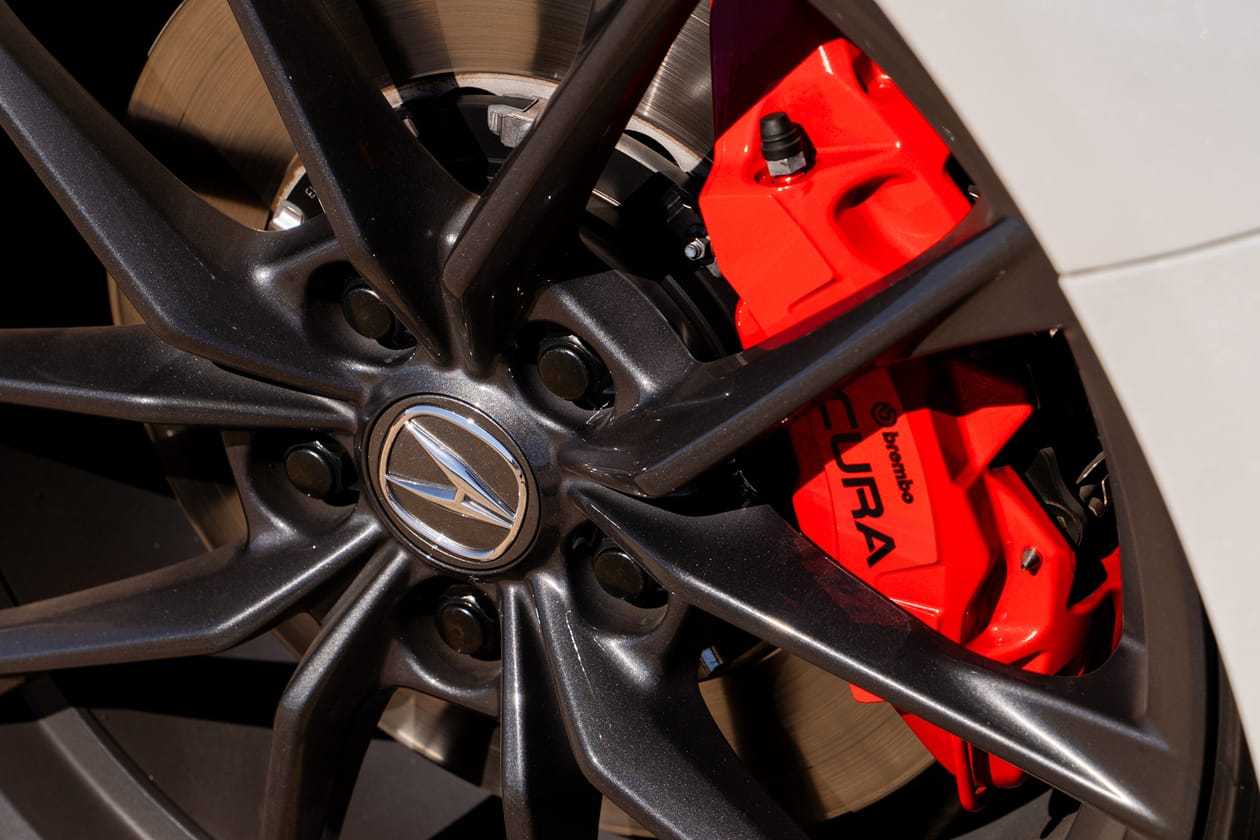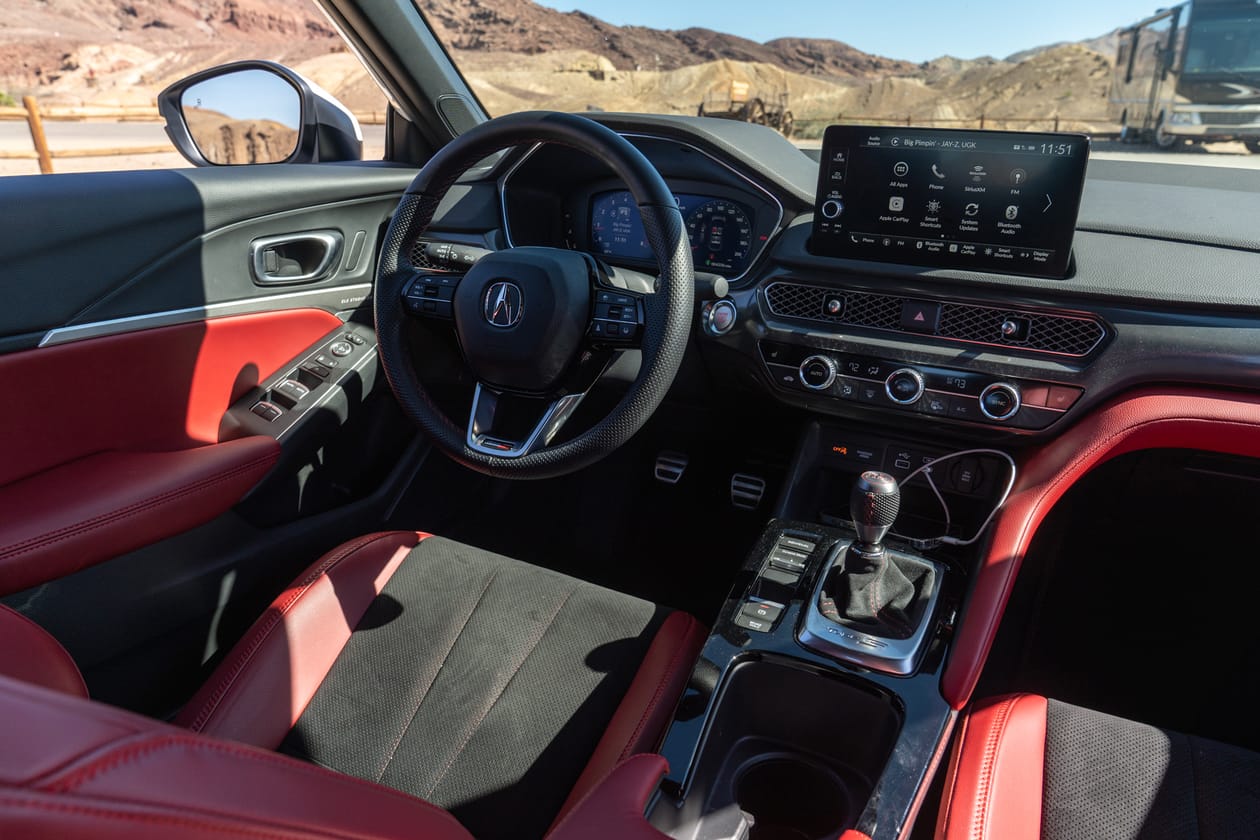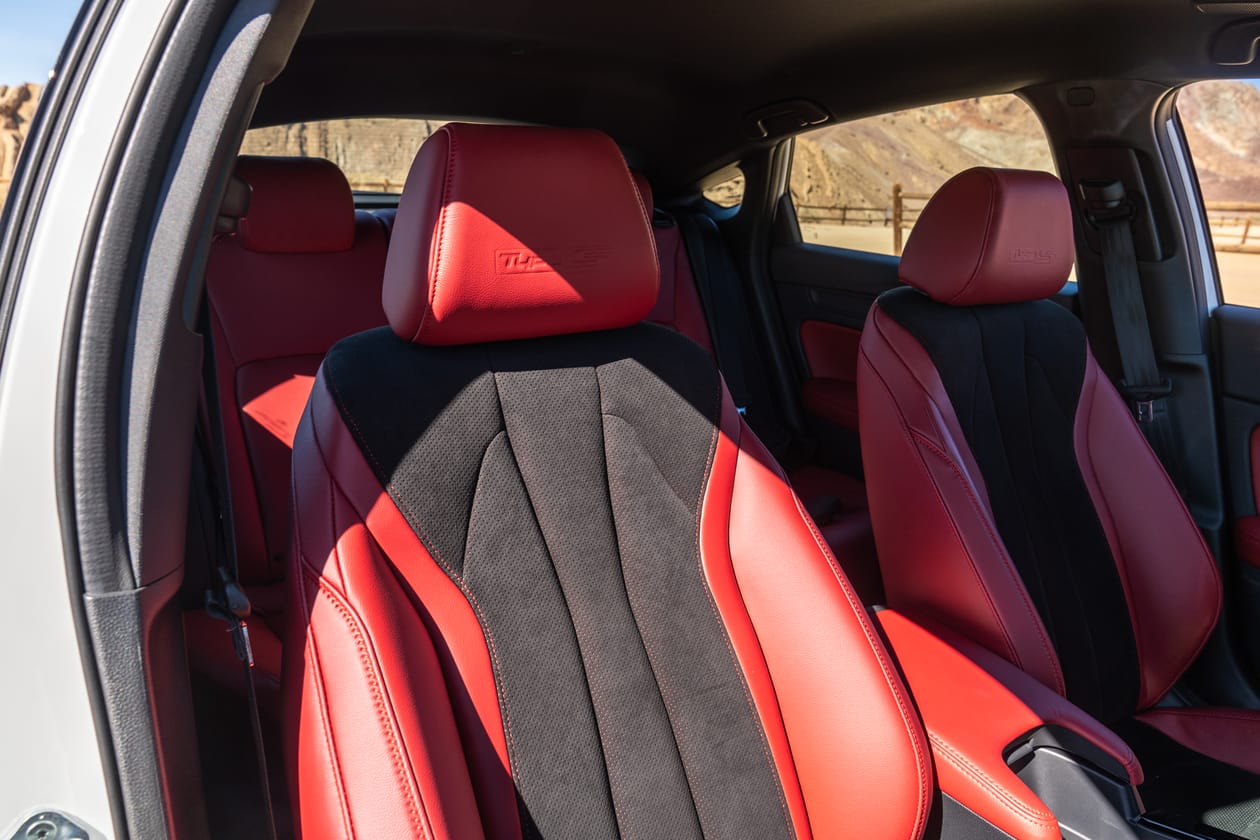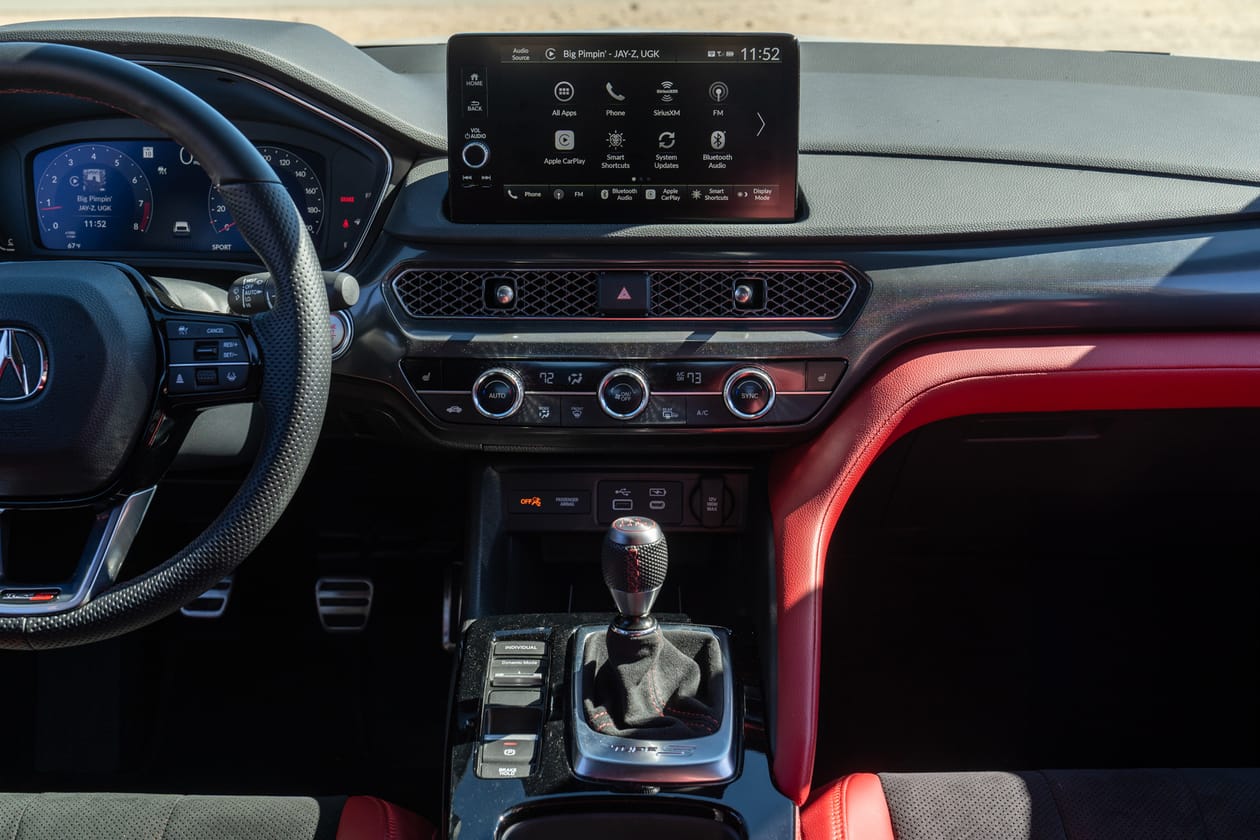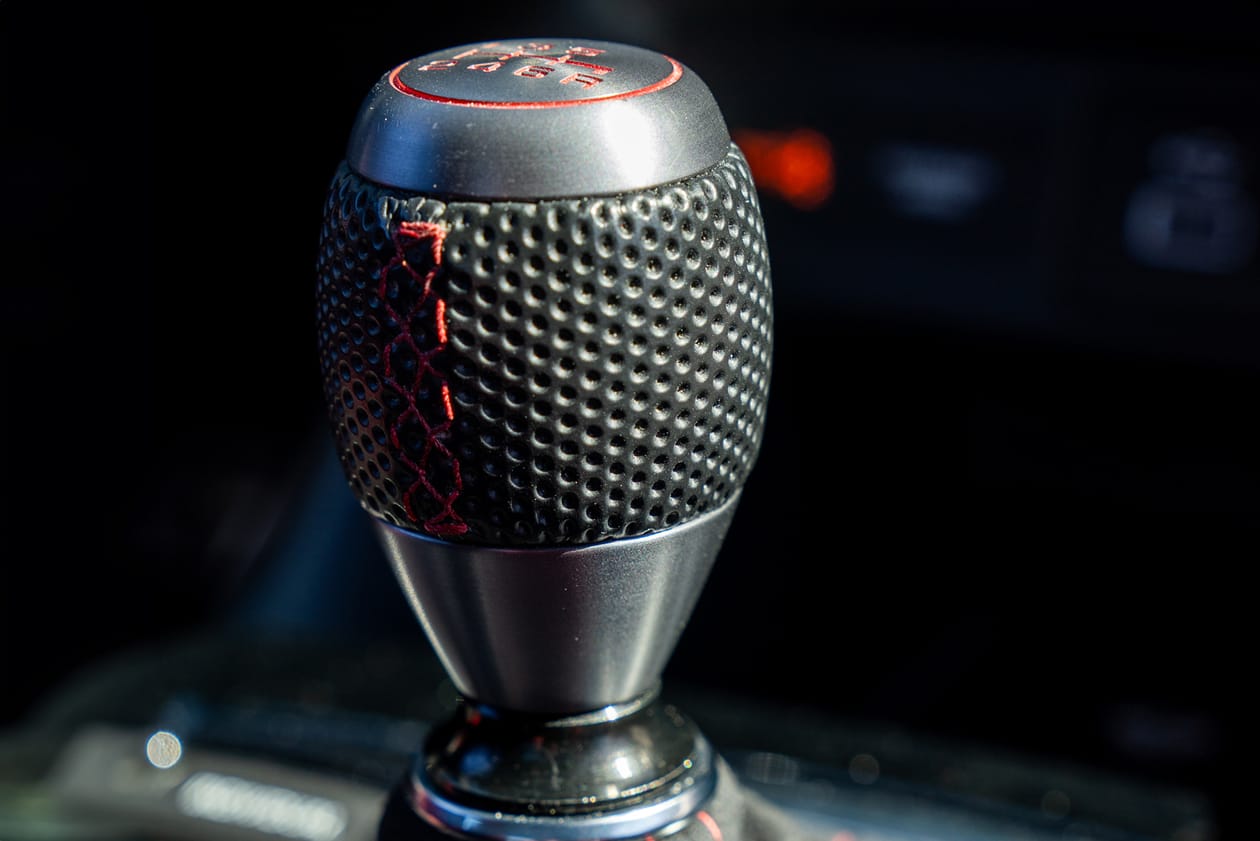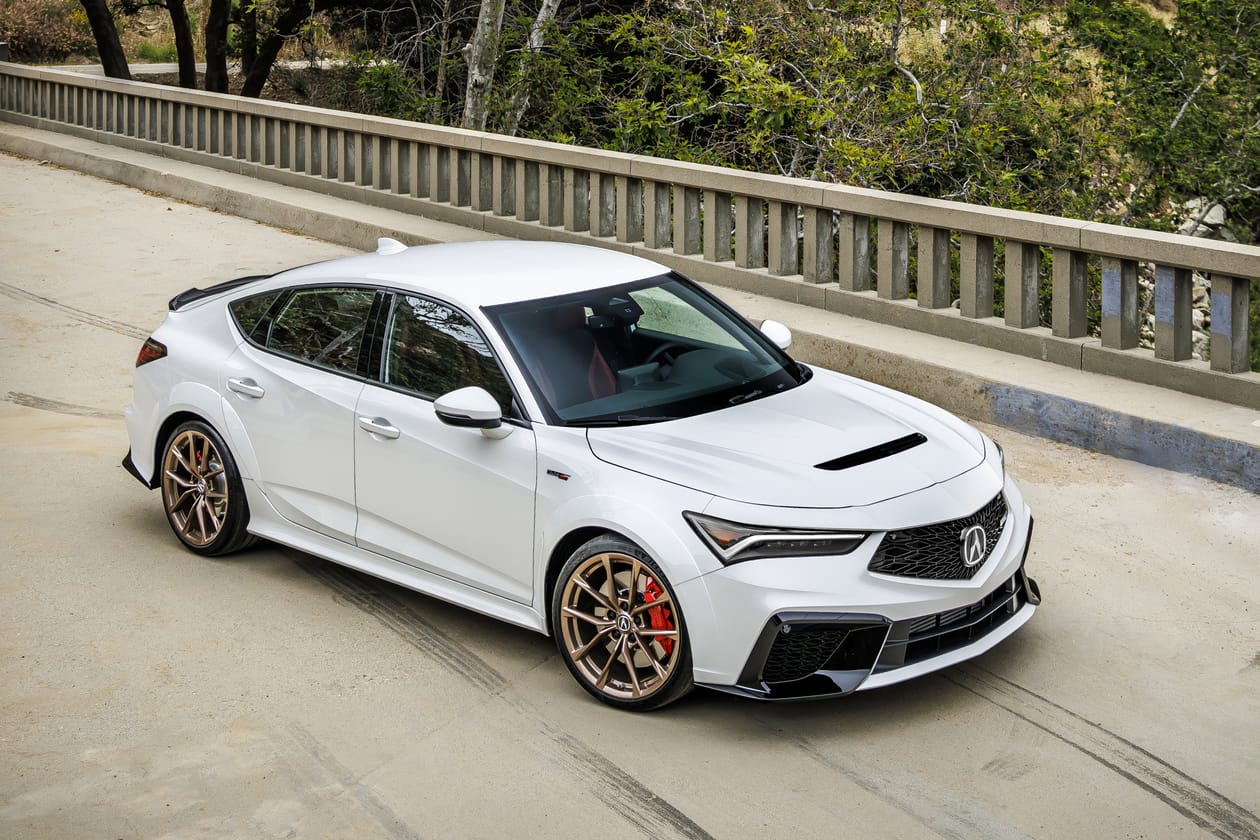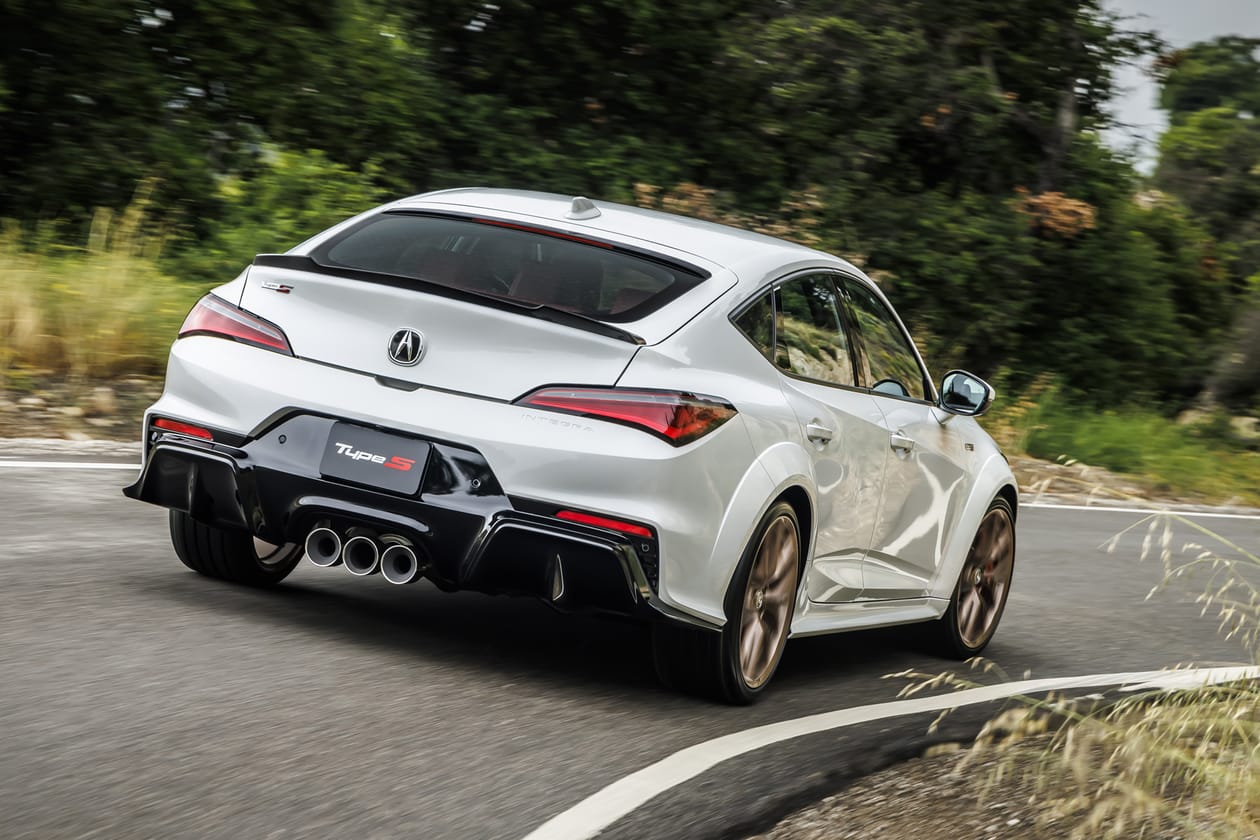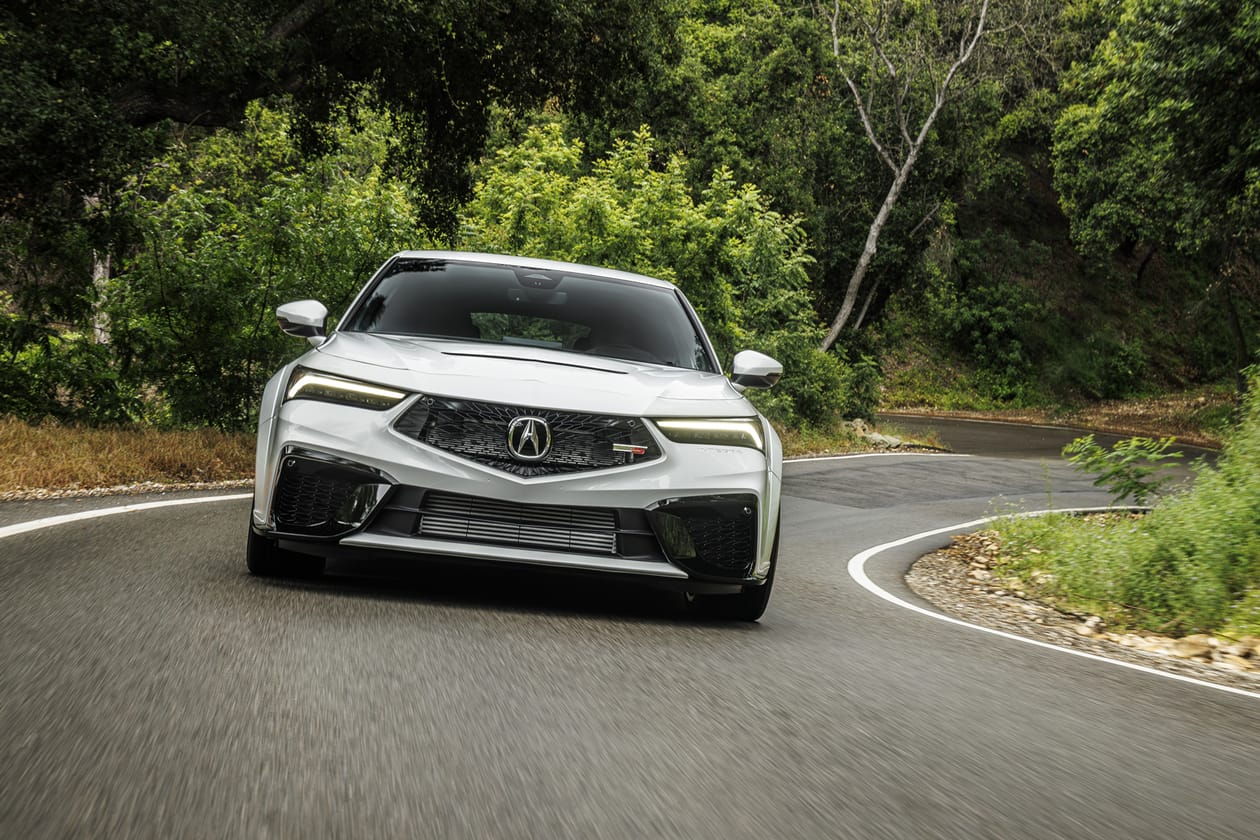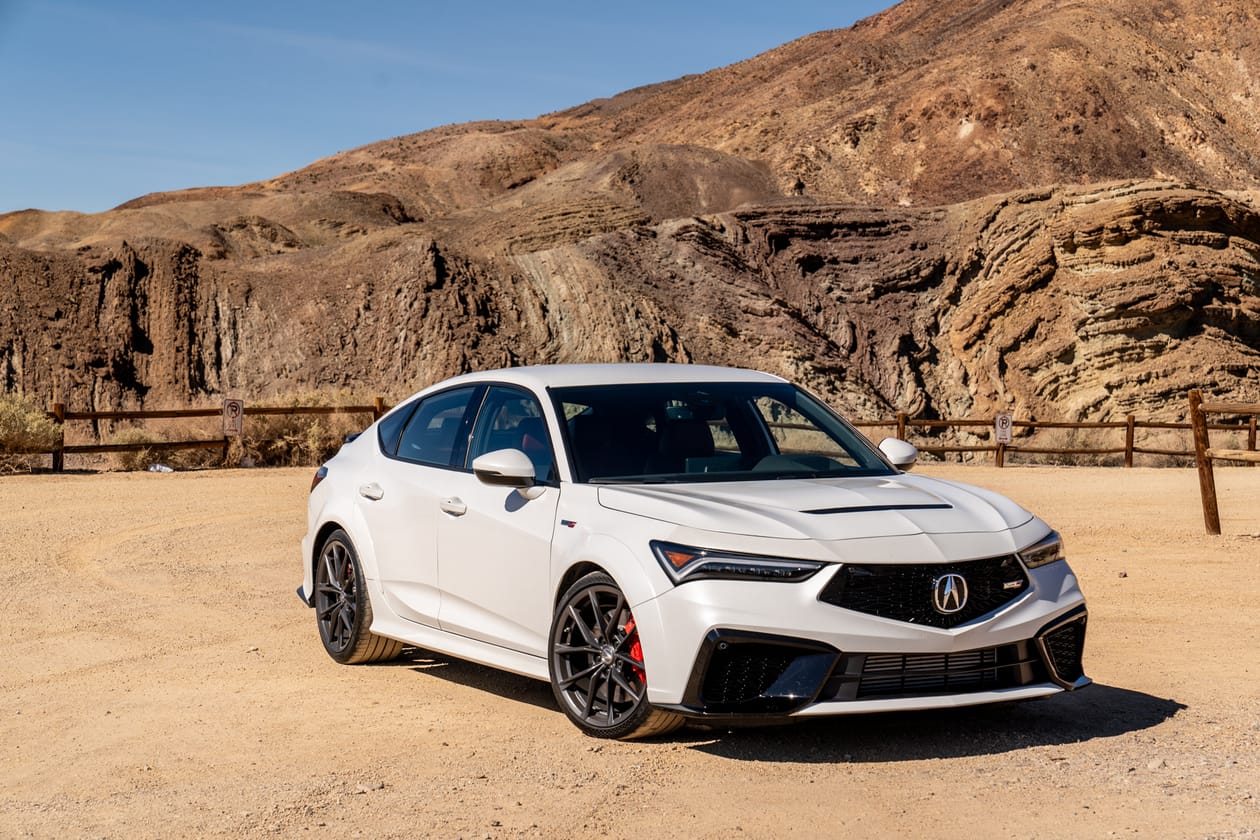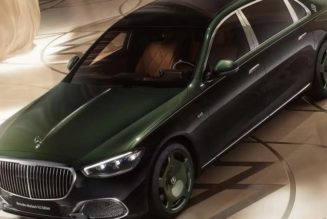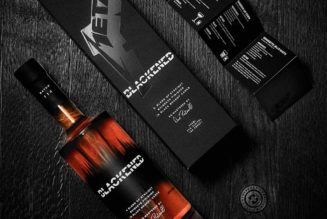Everyone grows up, it’s inevitable. Our tastes change, our needs change, our perspectives change. But do we change as a whole? That’s subjective, as you can take the “tuner” out of the scene, but you can’t take the… well you know how that goes.
Acura rolled out the Integra Type S earlier this year to mixed reviews, most saying it’s too little too late, or blasphemous to add two additional doors – the Integra name has always been a coupe. Others were iffy about it, drawing too close of a comparison to the car to which it’s based: the Honda Civic Type R FL5. However, after we spent a good amount of time – and miles – with it, the Type S makes a lot of sense.
For our latest Test Drive, we took the Acura Integra Type S on a 524-mile excursion to the Integra’s origins – Las Vegas’ annual haven for tuners and racers, SEMA. On our way there, we realized that not only would the car fit perfectly with the audience of the Speed Equipment Manufacturing Association conferences and meets, but the Type S is a synonym for the event itself – matured and grown up, but it never forgot where it came from.
The Looks
Beauty is in the eye of the beholder, and one could argue that wider is better but if we’re completely honest, we’re not completely smitten by the Integra Type S’s looks. We will agree that the wide fenders makes the car aggressive and from certain angles – like straight top down – it looks really good. But overall we can’t help but compare the Type S’s body to bigger body muscle cars we see on the road; a bit of a Dodge Charger in the fenders, for example. Our favorite design aspect of the Integra Type S in fact isn’t the wide stance, but the front end. With the addition of the hood vent, the fascia is mean and stout, has a good proportion of angles and cuts, and we don’t even hate the oversized front badge and grill surround, accented by a subtle-in-comparison Type S badge.
The rear is another letdown. The triple tail pipes don’t go with the rear bumper or lower valence. We’d be curious how a set of quad tailpipes, staggered, would’ve looked instead, which would in turn pair well with the wider stance. Ironically, the triple tailpipes fit the Civic Type R a bit better, maybe because it matches the slimmer bumpers and rounds things out. Nevertheless, it’s a center piece (pun intended) for the car and people will either love it or hate it. The other details also don’t really do it for us: the smoothed diffuser fins makes them go unnoticed, the fake vents – albeit tiny – disrupts the flow of the bumper, and even the tail lights are honestly a bit boring in overall design.
But one thing we did enjoy about the Type S’s appearance are the little things that you notice as you walk up to it. And you guessed it, we’re talking about the embossed “INTEGRA” in the bumper. While not exclusive to the Type S, the effort to include it as a throwback reference is not the only reason we like it; it’s simply a design element we don’t see with many other cars, who rather opt for either huge badge lettering or vinyl decals. We also noticed mini “Acura” typography within the headlights that we enjoyed, as well as the carbon fiber trunk spoiler at the rear (the hood vent is black glossy plastic however, which is a missed opportunity). BREMBO lettering being included onto the “ACURA” calipers is another perfect example of detail for detail’s sake, as most brands will opt to delete them for dominance.
Inside, we’re even less impressed unfortunately. The biggest letdown are the seats – quite frankly, the Honda Civic Type R has the best seats ever. In both the FK8 and FL5 generations, they’re so supportive and heavily bolstered for corners, but also comfy enough with ample cushioning. The Type S uses a completely different set of seats that are flat, low bolstered at the thighs and in fact not even cushioned enough for long trips – we sighed relief once we hopped out at a rest stop after three hours on I-15. For a car that borrowed so much from the CTR, we’d trade all of it for just the seats.
Another weird decision was the shift knob. For some reason, Honda/Acura went with a contrasting red stitching on the knob at the 6 o’clock position that scratched and irritated as we shifted up to third and fifth gear. Couldn’t they have spent just a little bit more and refined the leather with a hidden stitch? Did the 1” bit of red really make the gearbox that much sportier? Thankfully the size of the knob is good, fitting our palm nicely and the shape is pretty comfortable as we shifted into all gears. Bonus points though for the use of a dark aluminum metal finish, and the Alcantara shift boot was lightweight and silky smooth.
Overall however we’d score the interior quite low. Black/red two-toned interior isn’t our first choice, as we’d almost prefer an all black interior combo, or perhaps a mix of black leather and grey suede. The steering wheel reminded us of an Audi design but was overall fairly forgettable, the infotainment buttons and screen didn’t feel up-to-date, and, unsurprisingly, we even encountered rattles from two different locations within the cabin, both occuring as the car revved into the higher RPMs, causing us to knock around and tap the dash to find the culprit. Granted it’s not a six-figured German car, but it is an Acura that’s meant to be a bit more luxurious.
The Drive
Looks aside, we’re relieved with how the Integra Type S drives. Its engine – the same 2.0L turbo in-line four with VTEC® extracted from the Civic Type R – sounds, pulls, and revs just like it does from its Honda brethren. The turbos kick in fairly early around the 2500-3000rpm area, giving it plenty of midrange torque and lots of opportunities for shifting, which is a delight. We did encounter a bit of torque steer however, and noticed the front diff fighting us as we throttled through slow-to-mid speed corners and on-ramps. Nevertheless, Acura states the Type S is good for 0-60 in 4.9 seconds and we saw that as pretty accurate, reaching that mark in second gear with a few thousand revs left to ring out.
So the engine is good. What about transmission? Here we’re similarly impressed, because each gear felt appropriate for its speed. We’d almost go as far as to say it wasn’t too short like its competitors – just a little in the Toyota GR Corolla Morizo in our opinion – and definitely not too long. In first, second, and even the early revs of third, we were able to get traction control to kick in, and with it turned off we definitely chirped the tires a bit. The shifts are pretty crisp with just a slight notch at each gate, but something we found reassuring in reality. Lastly, the auto rev matching is awesome and while we couldn’t help but wonder if the car would be better off without it, we actually played around with random downshifts even on straightaways just to marvel at how smooth and accurate they were.
Now to our favorite bit: the handling. Turn in was very sharp, with no indication of body roll in Sport and Sport+ modes. Comfort mode is exactly that – a night-and-day difference in suspension set up, directness in the steering wheel, and of course acceleration, but for our four-hour drive to Las Vegas we stayed in that mode with active cruise control and lane detection and saw a very respectable 25 mpg. Michelin Pilot Sport 4S tires meant a firm, precise turn-in, but a bit noisy. The insulated cabin helped cure much of the road noise though – Acura goes above and beyond to mention its sound deadening is improved over the Civic Type R, and we agree it’s better. And Individual mode – a customization setting where you can set the parameters for engine, handling and steering characteristics – worked exactly how it should and we definitely felt the difference.
All in all, the Integra Type S performed beautifully both on the Strip as well as the freeway, giving high marks for its quick jaunts in town as well as that I-15 road trip.
The Ownership
From many points of view, Acura is trying to sell “a grown-up Honda Civic Type R,” or perhaps “a fun Japanese bruiser you can take for long trips.” It’s a bit of both, but nevertheless we came to the conclusion that it’s a pretty specific person who would love the Integra Type S. And, coincidentally, it was the perfect car and analogy for SEMA.
What was once the “Disneyland” for car tuners and aftermarket industry heads, SEMA has since evolved into the final word in automotive enthusiasts, and has since grown into something so much bigger than turbo wastegates, slammed air ride suspensions and “NOS.” The audience has also broadened – the show has seen a huge influx of newcomers especially since it’s now open to the public, but the core audience remains the 35-45 age range who dominated the show a decade earlier. Now, SEMA incorporates the latest showings in technological advancement, blending speed with efficiency, motorsports tuning with safety regulations, style with substance. In essence, SEMA has “grown up” but hasn’t forgotten what has made it so special.
Such is the same as the Type S. It’s legacy and heritage was build upon the tuner culture, and a platform that fostered creativity for builds whether it be the “nitrous and neon” direction or “slammed OEM+” style. Today, the Type S is just that – a clean platform for anyone who wants to build it up, with a crisp set of 20”s under those gigantic widened fenders. Its torque-y turbo and burbling exhaust will appease new adopters, and tuning will open the door for those who want to relive their 20s with a modern-yet-nostalgic drive. It’s the tuner car we know and love, but refined and ready for an audience in 2023 and beyond.
And best of all, it now has two extra doors.
